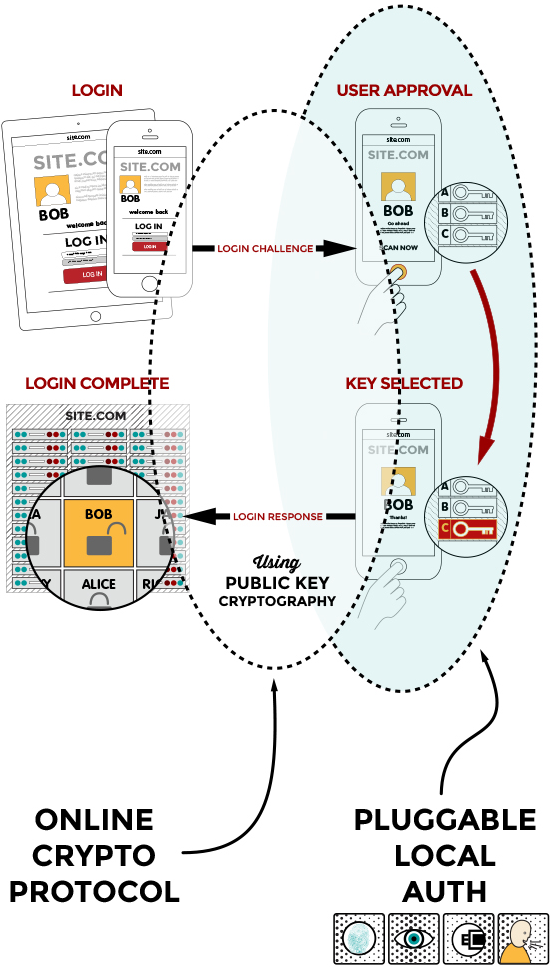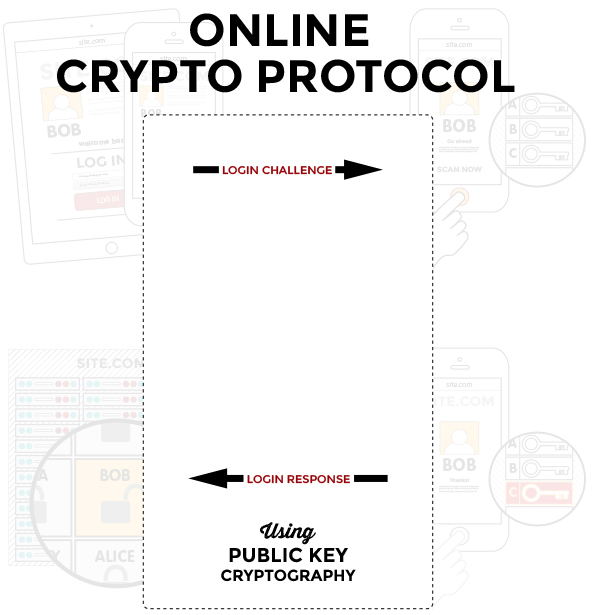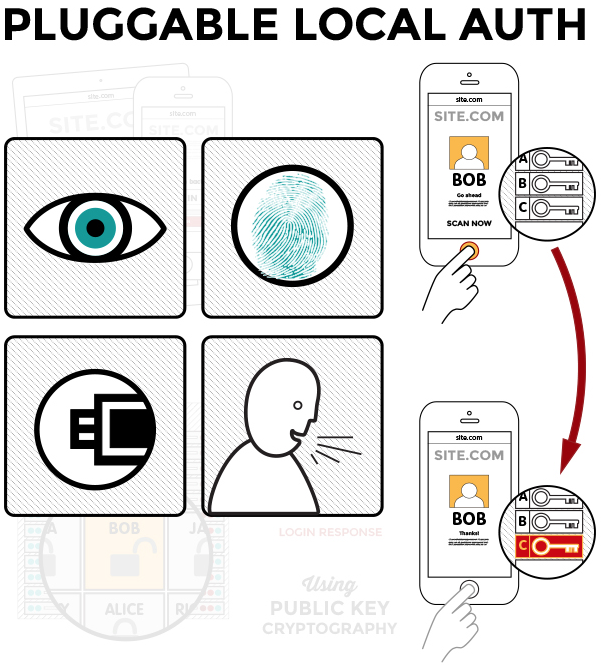The core ideas driving FIDO are (1) ease of use, (2) privacy and security, and (3) standardization. For implementing authentication beyond a password (and perhaps an OTP), companies have traditionally been faced with an entire stack of proprietary clients and protocols.
FIDO changes this by standardizing the client and protocol layers. This ignites a thriving ecosystem of client authentication methods such as biometrics, PINs and second–factors that can be used with a variety of online services in an interoperable manner.
FIDO Standardization

Online Crypto Protocol Standardization
FIDO standardizes the authentication protocol used between the client and the online service. The protocol is based on standard public key cryptography — the client registers a public key with the online service at initial setup. Later, when authenticating, the service verifies that the client owns the private key by asking it to sign a challenge. The protocol is designed to ensure user privacy and security in the current day state of the internet.

Client Standardization for Local Authentication
FIDO standards define a common interface at the client for the local authentication method that the user exercises. The client can be pre–installed on the operating system or web browser, or FIDO Authentication can be called through the browser using a standard API. Different authentication methods such as secure PIN, biometrics (face, voice, iris, fingerprint recognition, etc.) and second–factor devices can be “plugged in” via this standardized interface into the client.


